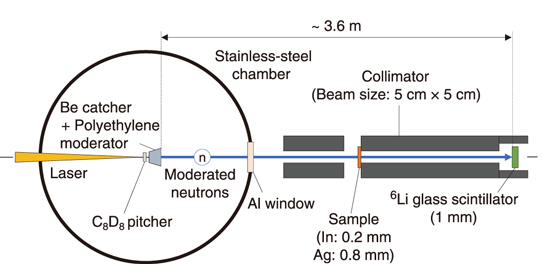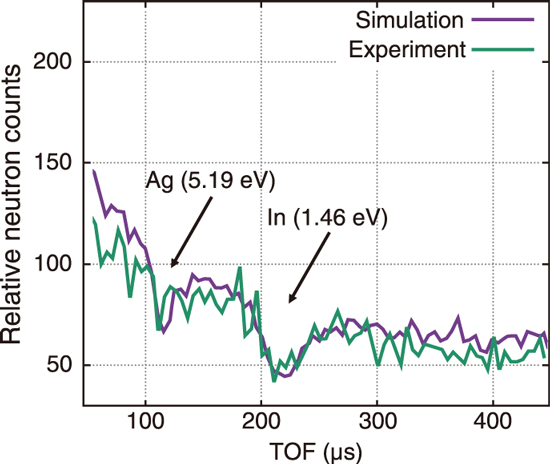
Fig.10-2 Experimental setup of neutron transmission measurements using the Osaka laser-driven neutron source (LDNS)

Fig.10-3 Time-of-flight (TOF) spectra from experimental and simulation results
To ensure the peaceful use of nuclear power, all states worldwide has undertaken the measurement of the amount of nuclear material and balance management (nuclear material accountancy). The amount of nuclear materials to be monitored by regulators is increasing with the expansion of the use of nuclear power. Therefore, to successfully monitor such nuclear materials with limited human resources, the measurement process for nuclear materials should be efficient and nondestructive analysis (NDA) systems have been used. However, installing such systems in existing nuclear facilities is difficult because the conventional systems for the accurate measurement are large. In addition, technologies for measuring nuclear fuels for new-generation reactors and highly radioactive nuclear materials are required. To meet these demands, we are developing a neutron resonance transmission analysis (NRTA) system using a laser-driven neutron source (LDNS) for miniaturizing the NDA system.
The neutron energy distribution is obtained by measuring the time-of-flight (TOF) of neutrons from a pulsed neutron source to a detector. The energy distribution of neutrons transmitted through a sample (TOF spectrum) shows the resonance dips corresponding to the nuclear reaction probability because a nucleus has large probabilities of reactions at inherent neutron resonance energies. The positions and depths of the resonance dips are determined by the nuclides and their amount in the sample. Therefore, nuclear materials in the sample can be measured by analyzing the TOF spectrum. This technique is effective for measuring highly radioactive nuclear materials such as spent nuclear fuels.
In TOF measurement, longer neutron flight distance and shorter neutron pulse width contribute to better energy resolution. However, it is desirable to shorten the flight distance in terms of downsizing a system, and a neutron source with a much shorter pulse width is required for accurate measurement. Therefore, we focused on an LDNS that can generate neutrons with a short pulse width and is expected to be miniaturized with the rapid advancement laser technology.
To realize a compact (short flight distance) NRTA system with an LDNS, we developed a neutron detector with both low gamma-ray sensitivity and high neutron detection efficiency. We also developed a data acquisition system. The goal was to deal with both increasing gamma-ray background events and the large number of neutrons detected per unit time (i.e., high counting rate). We also designed a moderator to effectively slow down fast neutrons by performing a Monte Carlo simulation to take advantage of the short pulse width of LDNS. Additionally, we conducted a neutron transmission experiment using an LDNS developed by Osaka University to demonstrate the applicability of LDNS to NRTA. The experimental setup and measured TOF spectra are shown in Figures 10-2 and 10-3, respectively. The experimental result shows trends similar to those observed in the simulation result. Further, resonance dips indicating the presence of indium and silver were observed in the TOF spectrum. This result implies that the NRTA system equipped with the LDNS successfully identified the nuclides in the sample. Through the present research, we demonstrated that a miniaturized NDA system can be expected in the near future.
This research was implemented under the subsidy for “The promotion of strengthening nuclear security and the like”, supported by MEXT.
(Kota Hironaka, Jaehong Lee)
<Previous: 10 Development of Science & Technology for Nuclear Nonproliferation | Next: Colophon>